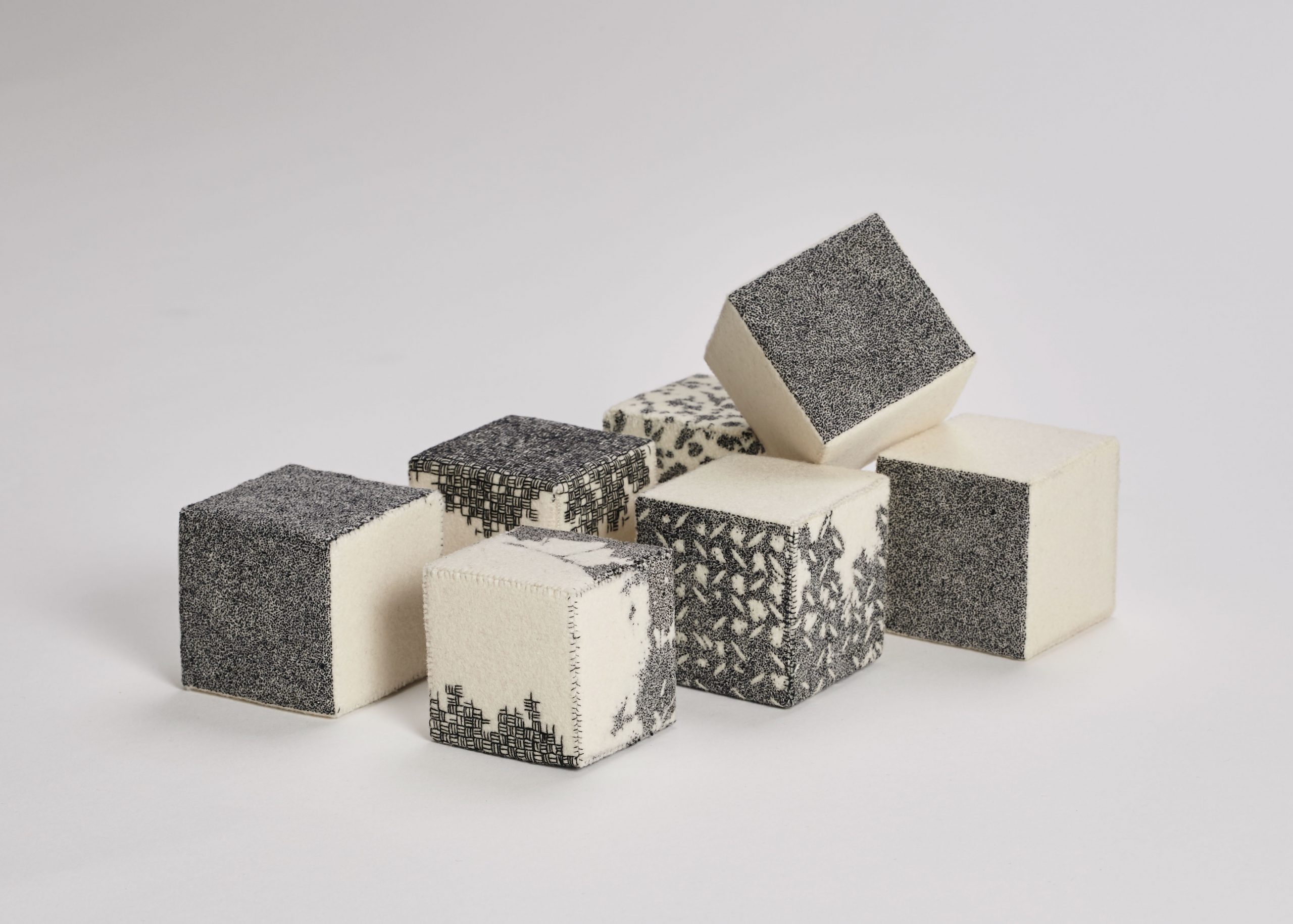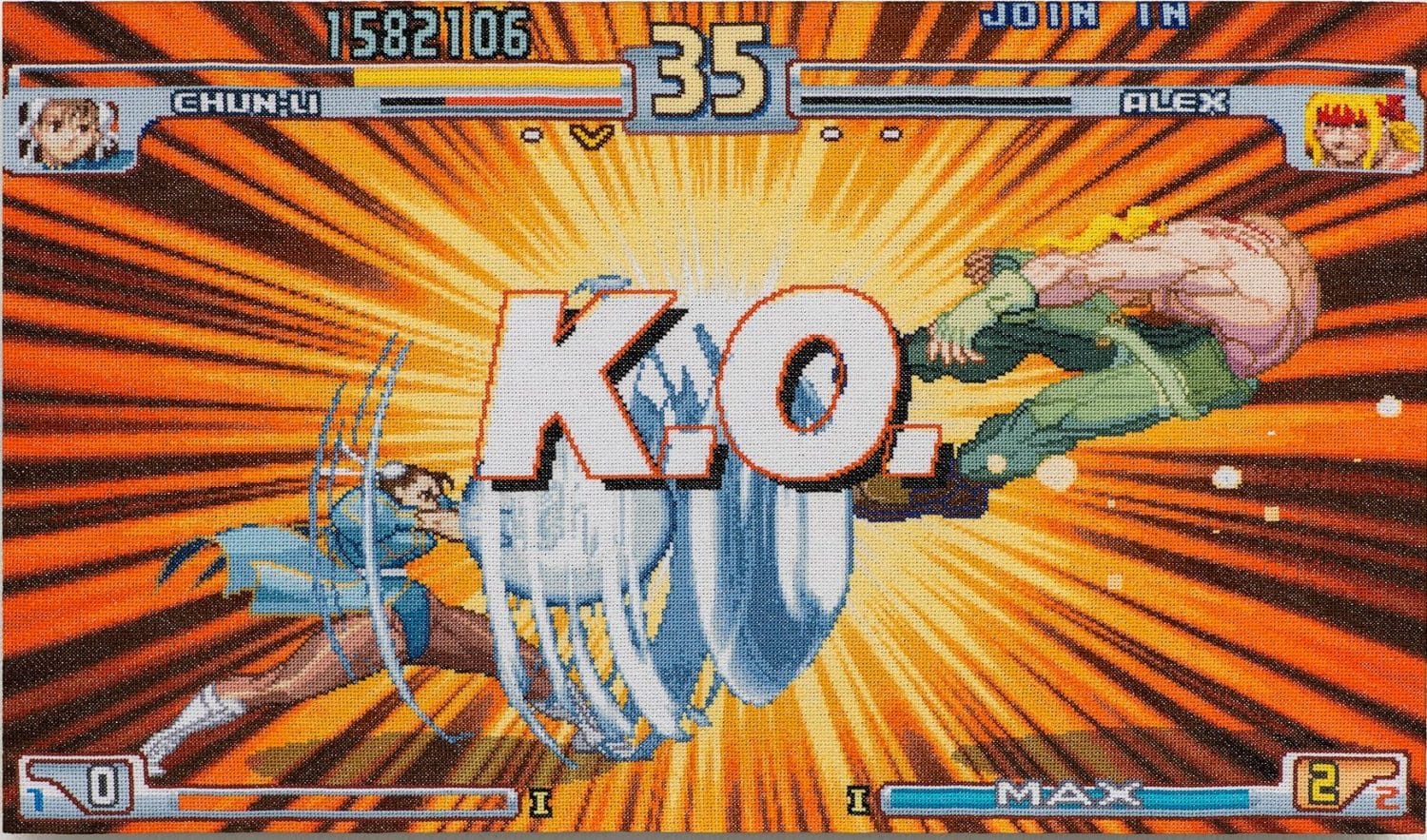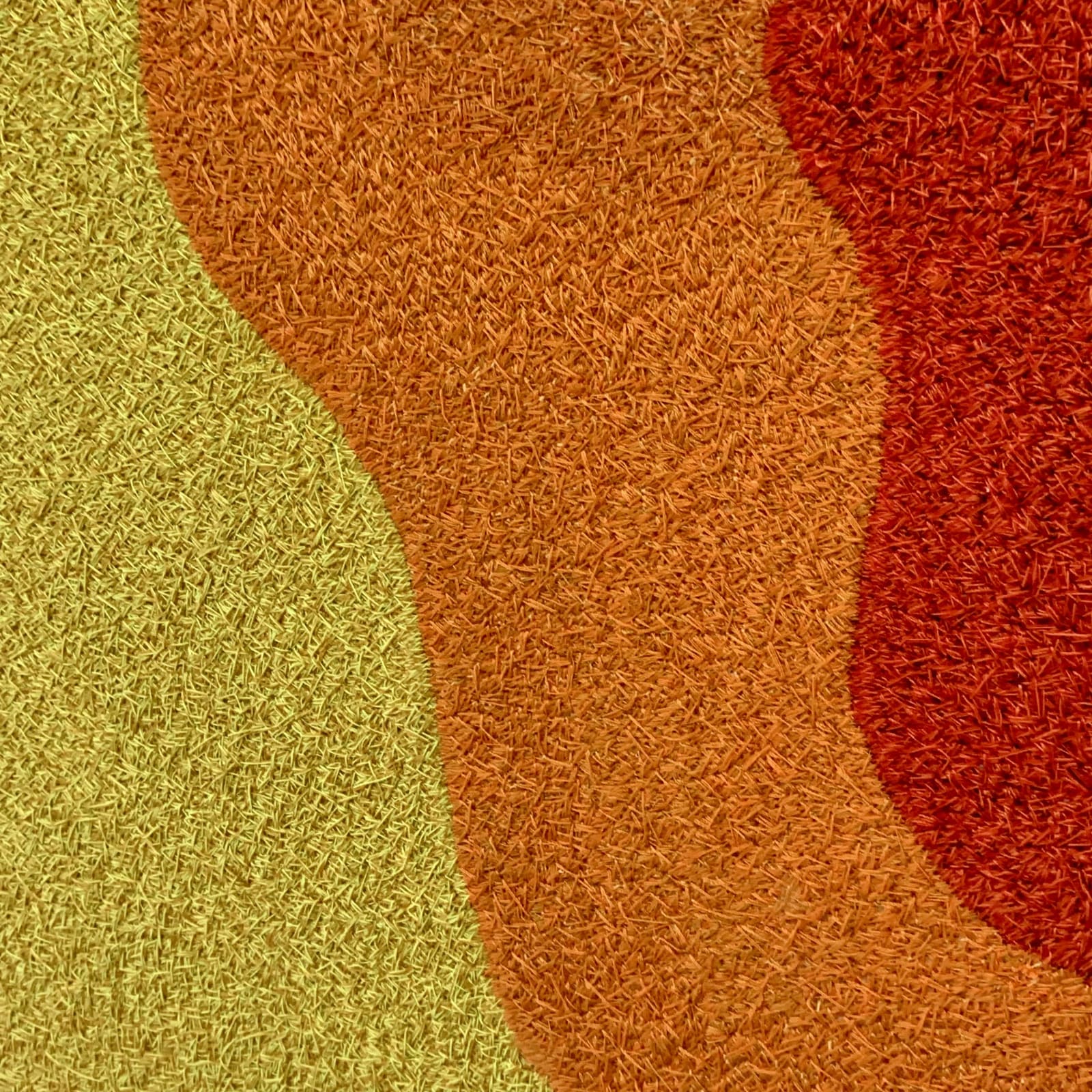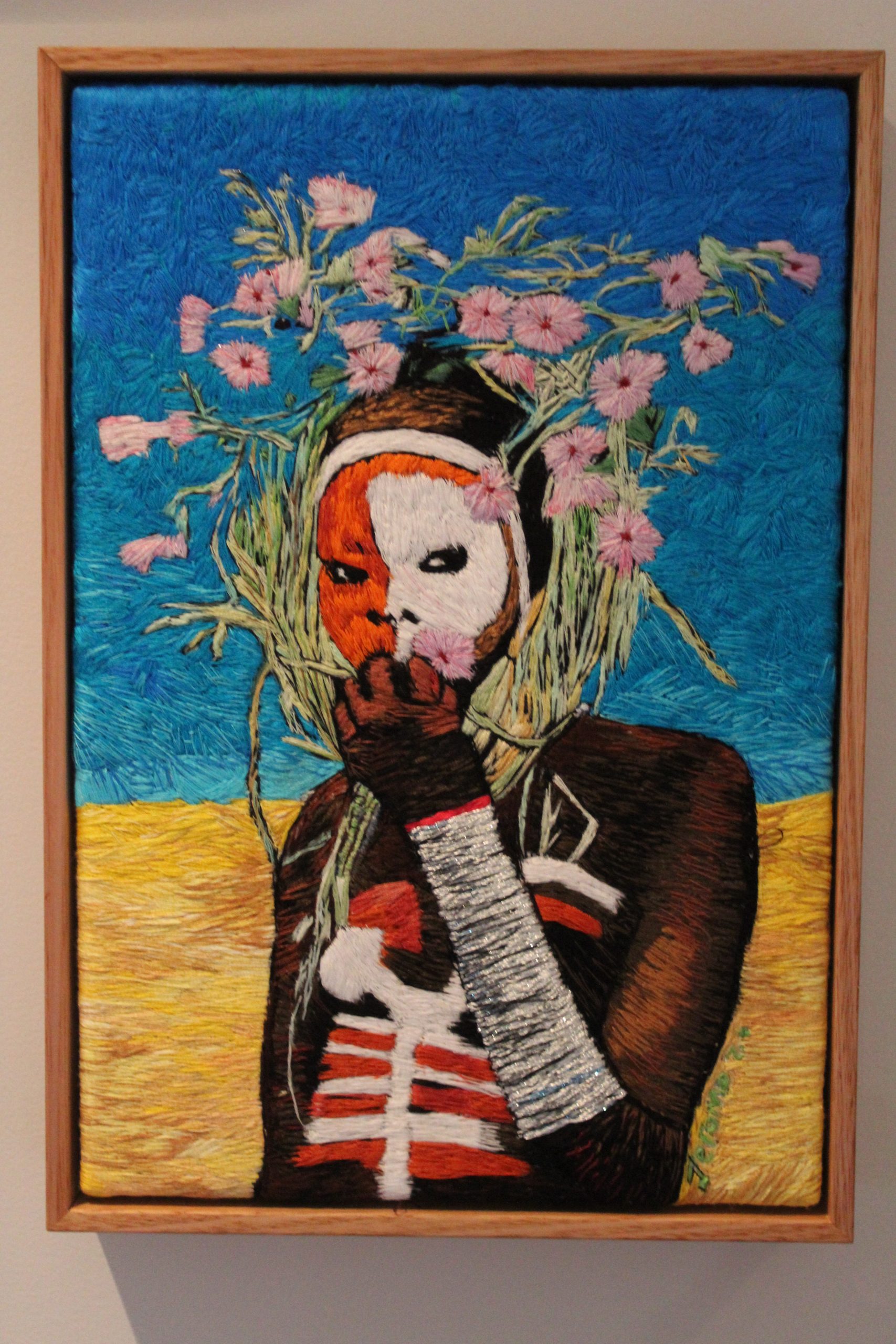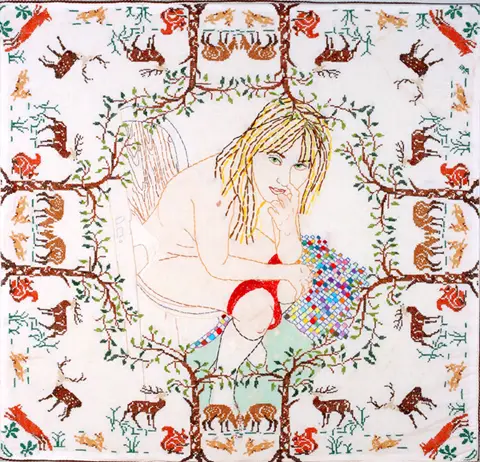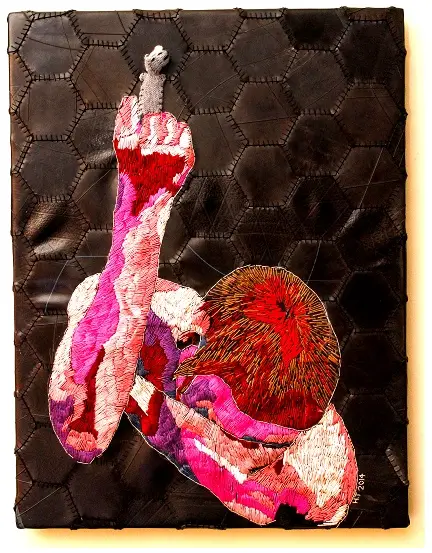Welcome to Manbroidery, an ongoing series of interviews with men who stitch. This time we welcome Richard McVetis, whose sublime stitched squares contain are bound with elegant intensity.
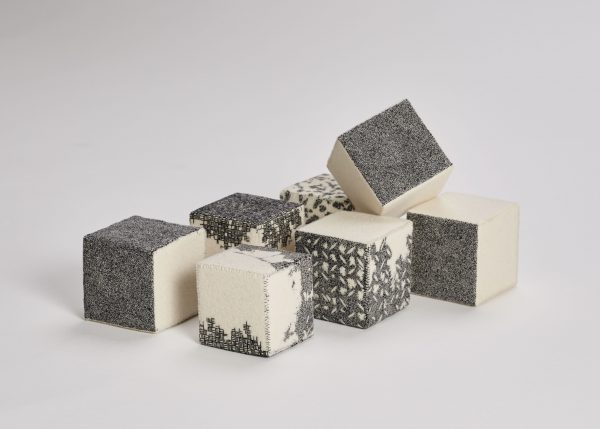
Location: London
Main embroidery medium: Hand embroidery, obsessive and meticulous, and monochromatic.
Noteworthy projects or pieces: Variations of a Stitched Cube, a piece of work I made in 2017 for an exhibition with the Crafts Council in London. An installation of 60 hand embroidered cubes, presented as monument and mediation on time. The work then toured to South Korea and was then shortlisted for the Loewe Craft Prize in 2018.
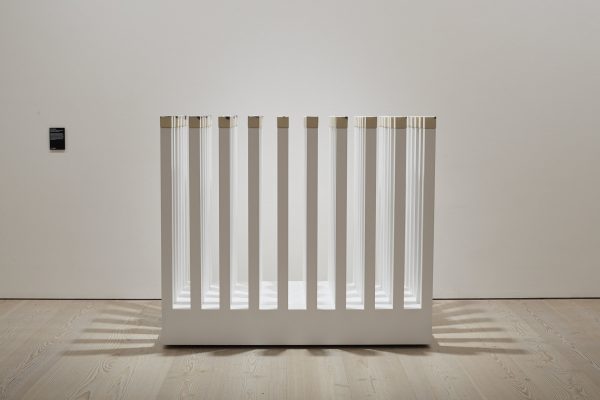
How did you come to be an embroiderer?
I didn’t really discover textiles as an art medium until my Art Foundation, prior to that I was drawing and painting, I was interested in graphics design and interiors. I remember having my interview with one of the foundation tutors, he was looking through my A-level portfolio and he immediately said that I would find a home within textiles. From there it was inevitable. I visited the Embroidery degree show at Manchester Metropolitan and I was excited by what students were creating. I applied and got accepted, it wasn’t until the end of the 1st year when I really got excited by the potential of hand embroidery, it was then when my signature aesthetic started to develop. After Manchester, I went onto the Royal College of Art and studied Constructed Textiles.
What does it mean to you?
Embroidery has been intrinsic to my practice and my life since my degree. I feel fortunate to have been introduced to it. Embroidery and art has enabled me to make sense of the world, and it has helped me to put into material form, things that I could only imagine. The process of embroidery, slow, methodical, restores a sense of order and informs a more profound comprehension and connection to the world. There is a wonderful intimacy in this labour-intensive way of making; the ritual and repetition allow you to create space, both physical and mental. The slowness is crucial here, I like how I am limited by my bodies speed. As I write this, we are currently in week 6 of the COVID lockdown, being able to make has certain helped to alleviate some of my anxiety.
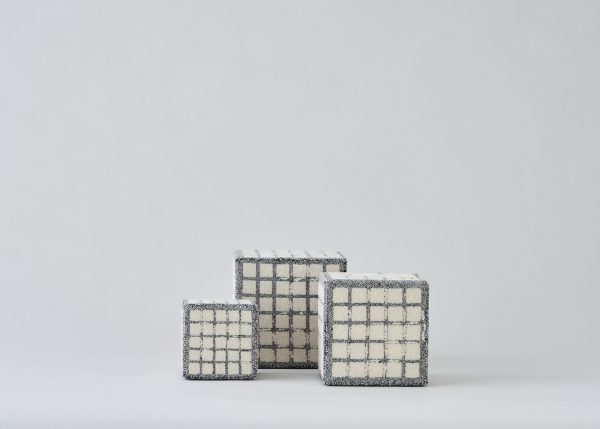
Where do you like to work?
I like that I can pretty work much from anywhere, I stitch at home on the sofa, but I have studio that I work from as well. Basically, anywhere with good light and comfy place to sit.
How do people respond to you as a male embroiderer?
On the most part, people are not too surprised, I would say that the perception of embroidery and textile art has changed in the last decade or so, however, there have been occasions where I have been sat on a train, or in public, and the sight of me sewing became a spectacle. This made me very self-conscious and I tend to only stitch in private now. It’s getting easier with age, as I care less what people think.
I’ve never been conditioned to think that a specific medium is for one gender and perhaps that’s why I’ve taken to it. Gender or sex are not something I discuss in my work, but I do recognise the social and cultural baggage that comes along with embroidery, and it is always the first question that I am asked (I think this is also a very Western attitude). I hope that by using embroidery, I challenge the myth that it is not for women only and that I might encourage a more diverse participation. There have been on occasion comments that any success that I might have had is down to being a man in a women’s world. Sexism works both ways.
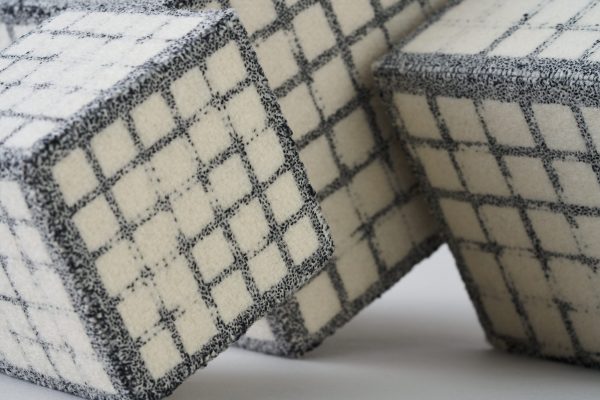
Who inspires you?
Inspiration takes many forms: a memory, an artist, the urban environment, the process of making itself, as well as some I might imagine. I read a lot and I’m drawn to the ideas of time and physics discussed in Carlo Rovelli’s books. I take great joy and solace in the work of Agnes Martin, Rachael Whiteread, Edmund De Waal, and I’m currently very seriously obsessed with Vija Celmins and Berenice Abbott.
How has your life shaped or influenced your work?
I’m quite lucky to have had quite an interesting start to my life, I was born in South Africa and lived there until I was ten. It was a completely different way of life, a very active and outdoor lifestyle. We moved back to Scotland first, and then to the West Midlands, it was a shock to the system, the light, the weather, quite a lot for me to adapt to. I’m sure that what I have experienced and seen has shaped and influenced my work, even subconsciously. We are all objects that exist in time, subject to decisions and events that shape and form what we might become. I think more than anything, the ability to play has had the most influence, to sit with objects and materials, content to just let things happen. Alongside my art practice, I worked extensively in retail design, organising and curating spaces where people shop. I think this organisation and understanding of space is hugely important, both in the making of my work, their relationship to each other and the conversation they have with a physical space like a gallery.
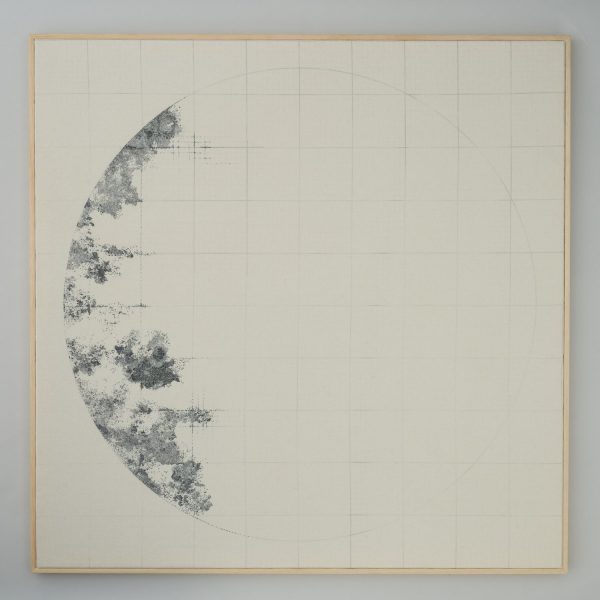
What are or were some of the strongest currents from your influences you had to absorb before you understood your own work?
Abstraction, Abstract Expressionism, Minimalism, Fibre Art, Time and Space (I’m still trying to make sense of these, and I mostly likely never will but embroidery and textiles are such versatile mediums, simple, unpretentious, it makes them the perfect medium to continue this exploration)
Do formal concerns, such as perspective and art history, interest you?
In the beginning not so much, but as I’ve read, discovered artists and movements, it has become important to understand what has come before, it’s great to connect with artists across time through ways of thinking.
What do your choice of images mean to you?
I take and collect images from all sources, more than anything I’m looking at texture, patterns, everyday abstractions and composition from my environment. I’m drawn to architectural and scientific images, images that show scale and how things are constructed, arranged, how things work. These are sometimes the starting point for a work, but more than often it is the ritual and repetition of a process that drives me to create. The motifs and shapes within the images are a framework, a starting point, a space to fill with time.
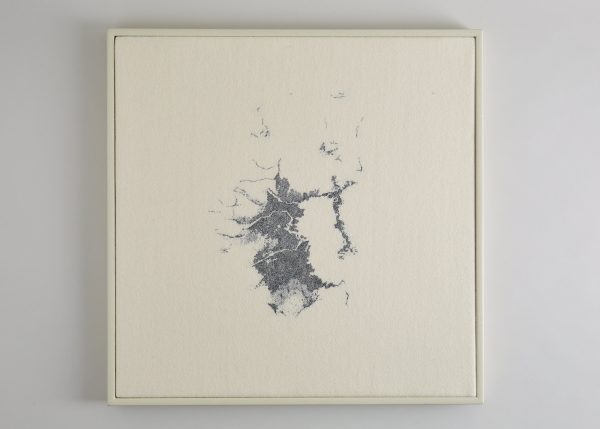
How do you hope history treats your work?
I hope that people will continue to engage with the work, get closer and spend time with it.
Where can we find you and your work?
Later this year I will having my first solo exhibition at the Crafts Study Centre in Farnham. The exact date is TBC. You can also find me on the socials @richardmcvetis, and my website www.richardmcvetis.co.uk
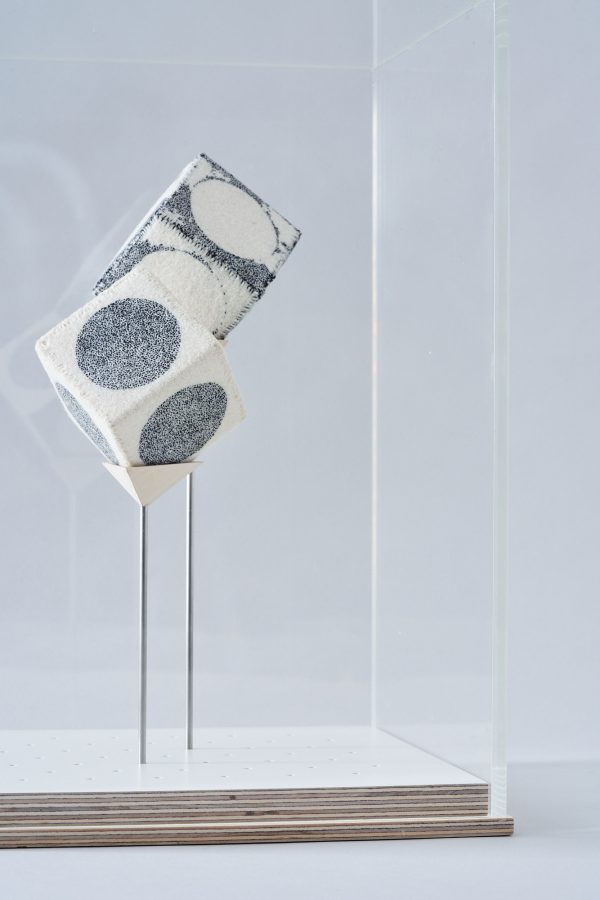
Manbroidery was created with the support and wisdom of the magnificent Bascom Hogue.
Are you a manbroiderer with worthwhile work to share? Do you know a man who stitches and ought to be featured in this column?
Get in touch with us and we’ll and you to the growing ranks of marvellous manbroiderers!

